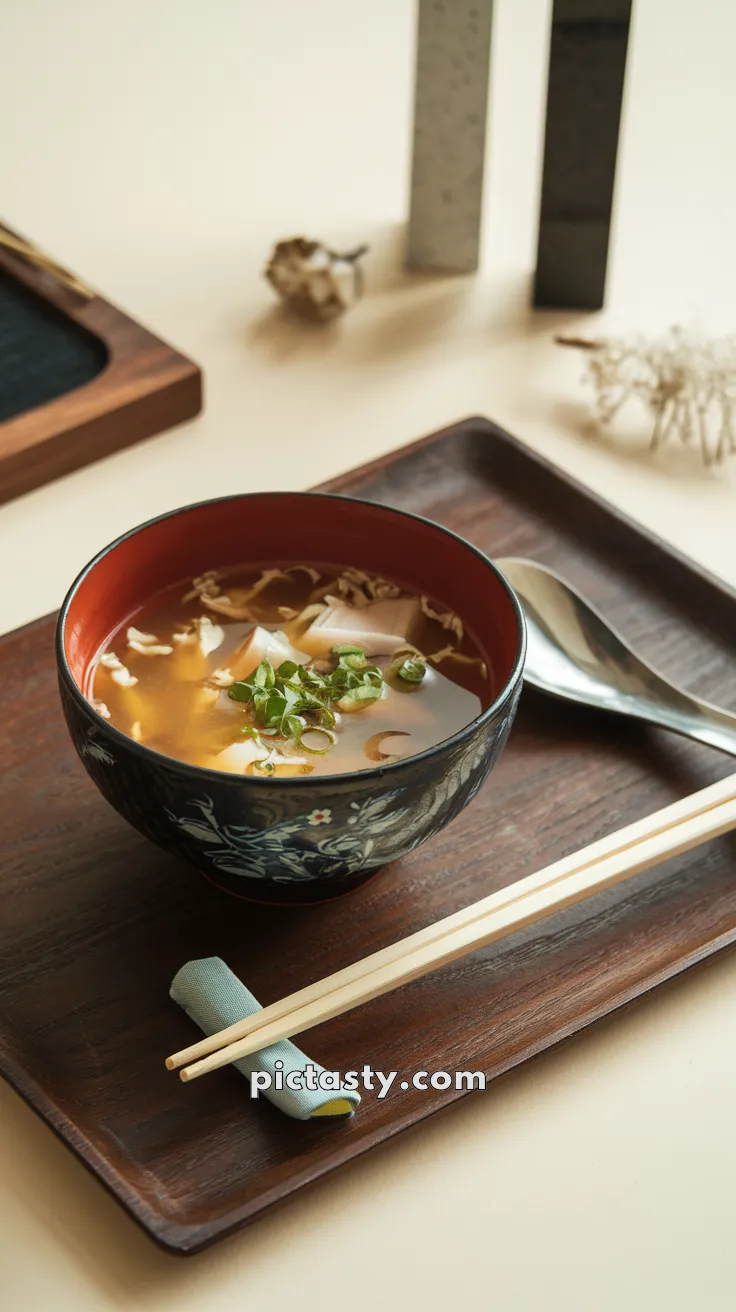Who can resist the comforting allure of a warm bowl of Miso soup? I certainly can’t. This Japanese staple, a soul-warming fusion of simple yet flavorful ingredients, has always been my go-to comfort food. Its savory, umami-packed broth feels like a warm hug on a cold day. Have you ever experienced the magic of a well-made miso soup?
Creating miso soup is like crafting a symphony. Each ingredient plays an instrumental role in producing a beautiful harmony of flavors. And the best part? It’s surprisingly easy to make right in your own kitchen. Let me guide you through the process of creating your own bowl of this comforting, delicious soup.
The History of Miso Soup
Miso soup carries with it a rich history dating back to Japan’s feudal era. It was during this time that miso, a fermented soybean paste, became a staple in the Japanese diet. The reason? Not only is it delicious, but it’s also packed with nutrients.
When paired with dashi, a simple broth made from kelp and bonito flakes, miso forms the base for this iconic soup. Add in tofu and green onions, and you have a simple yet satisfying meal that has been enjoyed by generations of Japanese families.
The Importance of Quality Ingredients
When making miso soup, remember, the quality of your ingredients matters. After all, the soup is only as good as its components. A high-quality miso paste, made from fermented soybeans, is essential. It imparts a rich, umami flavor to the soup that’s hard to match.
In addition, a good dashi is paramount. While it’s okay to use a store-bought version, nothing beats a homemade dashi. It adds depth and character to the soup, making it even more delicious.
Choosing the Right Miso
Choosing the right miso is akin to selecting the perfect wine for your meal. There are three main types of miso – white (shiro), red (aka), and mixed (awase). Each type has a unique flavor profile and can dramatically change the taste of your soup.
White miso is made from soybeans and rice and is fermented for a shorter period. It has a mild, slightly sweet flavor. Red miso, made from soybeans and barley or other grains, has a longer fermentation period and a robust, salty flavor. Mixed miso is a combination of red and white miso, offering a balance of sweetness and depth. For this recipe, we’ll be using white miso for its gentle, subtle flavor.
Ingredients
- 4 cups of dashi
- 3 tablespoons of white miso paste
- 1 package of silken tofu, cut into cubes
- 3 green onions, sliced
- Seaweed, to taste
Instructions
- Start by making your dashi. Bring 4 cups of water to a boil and add your kelp and bonito flakes. Reduce heat and let simmer for 15 minutes.
- Strain your dashi, discarding the kelp and bonito flakes.
- In a separate bowl, mix your miso paste with a little bit of warm dashi until smooth. This will help prevent clumps.
- Add your miso mixture back into the dashi, stirring until combined.
- Add your tofu and seaweed, letting it simmer for a few minutes until heated through.
- Garnish with green onions and serve hot.
Cook and Prep Times
- Prep Time: 10 minutes
- Cook Time: 20 minutes
Tips for Miso Soup
Always add your miso paste to a bit of warm dashi before adding it to the pot to prevent clumping. Also, don’t let your soup boil after adding the miso – this can affect its flavor and nutritional value. Finally, consider garnishing with other ingredients such as mushrooms or daikon radish for an extra layer of flavor.
Why This Recipe is a Must-Try
This miso soup recipe is a must-try because of its simplicity and depth of flavor. It’s an easy way to bring a bit of traditional Japanese cuisine into your own kitchen, and it’s deliciously comforting. Plus, it’s versatile – feel free to add your favorite veggies or proteins!
Nutrition Information
- Calories: 80 kcal
- Protein: 6 g
- Fat: 3 g
- Carbohydrates: 7 g

